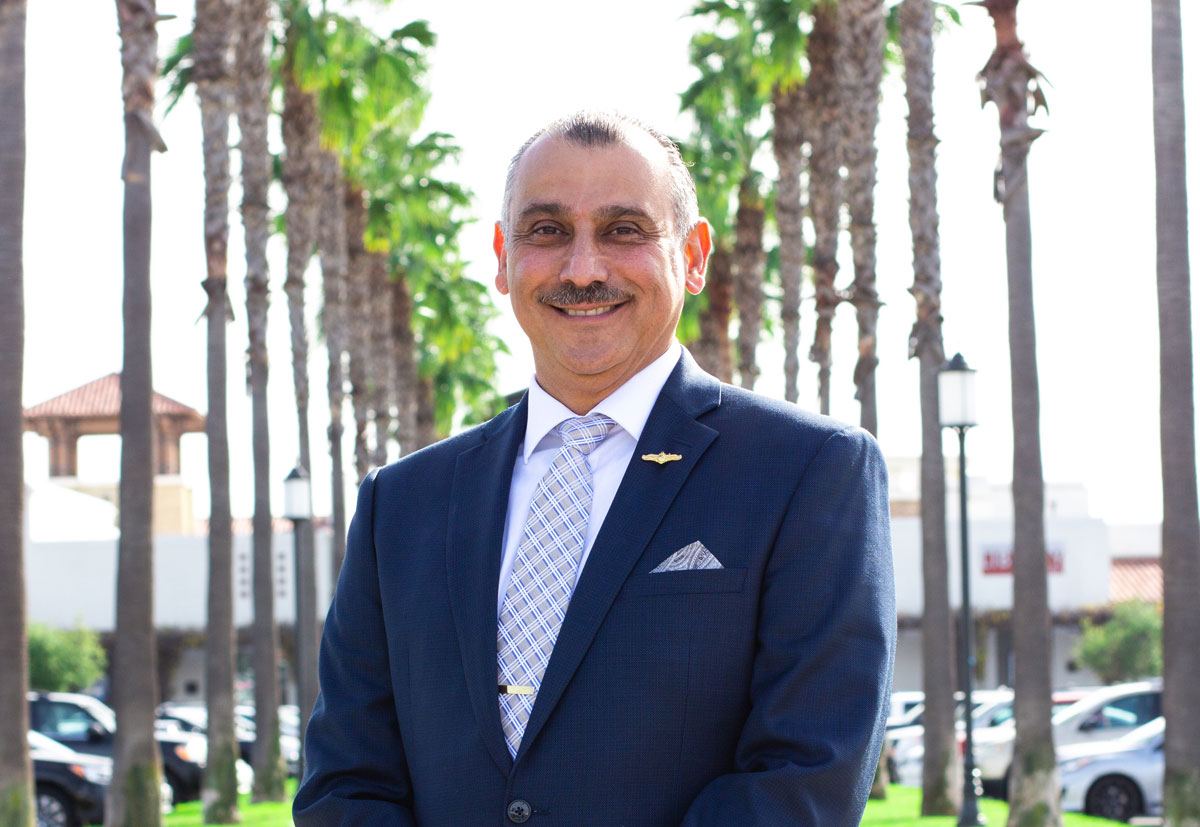HENRY MARTINEZ
District 3 candidate
1. How will your professional experience help you serve the city of Chula Vista?
The United States Navy has produced some of the best leaders in the world, instilling the following qualities: selfless, intelligent, influential, disciplined, teamwork, and devoted. Electing a military veteran with 32- plus years of leadership experience would immensely lead this city in the right direction for everyone. These virtues are critical in the military and would be very beneficial for the city of Chula Vista.
2. What is the most pressing issue in your district, and how will you address it?
Chula Vista’s rapid growth poses significant challenges to public safety, traffic congestion, and lack of technical jobs. I would work strictly hand-in-hand with the city manager and Growth Management Oversight Commission (GMOC) to review previous reports, recommendations, lessons learned, and work as a team to develop solutions and incentives that would meet the future strategic goals. In June 2019 the people of Chula Vista voted Measure A, half-cent sales tax, and it would be my duty to protect Measure A as it was initially intended to be used. I will not allow any modifications to be implemented to Measure A during my term. Police officers, firefighters, and first responders are the primary line of defense for Chula Vista communities, responding to an evolving spectrum of natural and human-made threats. We need to ensure that we protect Measure A.
3. What should the city’s overall priorities be, and how will those priorities impact your district?
Local high technology development, attract and support existing Chula Vista businesses, assure advanced internet access, guarantee city strategic use of technology, stimulate tech transfer, entrepreneurship and provide incentives, promote Chula Vista as center for high technology that attract global tech companies and at the same time support High Tech High School, surrounding schools to include Southwestern Community College. The efficient procurement of goods and services from local businesses may help facilitate employment opportunities at these businesses in addition to the traditional function of delivering services and improvements to the community. Facilitate the expansion, attraction, and retention of base sector employers. Actively support federal defense appropriations for purchase and repair of military hardware that is or can be manufactured within the city. Facilitate economic development citywide, with consideration of the city’s status in the border region of Mexico, with adequate provision of an information infrastructure system.
4. . In the last year, Chula Vista became certified as a Welcoming City. It was ranked the second in the New American Economy’s list of cities across the nation that are most supportive of immigrants. How can Chula Vista continue to uphold these standards and be a welcoming place for immigrants?
You must have compassion and a blending of ideas to tackle the situation in the future. On Dec. 3, 2019 Chula Vista was the first city in California to be designated a Welcoming City. Not all cities in America may be seeing the same positive results as Chula Vista. According to the city, more than 13% of immigrants living in Chula Vista are entrepreneurs, and more than 22% had at least a bachelor’s degree, as of 2017. I have personally talked to the entrepreneurs that have benefited from the Welcoming City, which has employed local Chula Vista residents, which is a win-win situation for everyone.
San Diego County has a shortage of skilled labor, electricians, welders, and Chula Vista students’ current options are going to college if they can afford it or have the aptitude for mathematics, English, or science. Second option is to work at a fast-food restaurant or a retail store. We desperately need to provide additional options for those that do not want to seek high-level education; we need to bring back vocational skilled training in schools.
Contrary to what many parents consider students’ learners who find job specific skills in high school and choose vocational careers often go pursue higher-level education. If we want everyone’s child to succeed, we need to bring vocational education back to the core of high school education system.
5. How will marijuana dispensaries impact your district? Do you think maximizing the total number of allowable stores per district is a good move?
As more cities push for the legalization of marijuana, there is increasing fear that the stores that sell cannabis, commonly known as dispensaries, will destroy their surrounding communities. Both recreational and medical marijuana is permissible in the following states: Washington, Oregon, California, Nevada, Alaska, Colorado, Massachusetts, and Maine. However, because of the adverse ripple effects of legalizing marijuana, local city support does not necessarily translate into local district backing. Children and adolescents will be at an exaggerated risk of using marijuana sold at these dispensaries, as the drug becomes far more accessible. Furthermore, adolescence in disadvantaged communities are known to be at even higher risk. Regulations to prevent adolescent use have done little to ease concerns. Current laws that are applied to tobacco and alcohol retail outlets are not enforced in the same way for marijuana, particularly zoning laws. Anti-marijuana activists are more and more concerned about these stores being located near schools. Marijuana use, particularly among youth, dramatically increases the risk for mental illnesses and can be detrimental to a young person’s social, psychological, and intellectual development. As cities continue to legalize marijuana despite its known risks and disadvantages, communities that have dispensaries must receive adequate funding to ensure that effective policies, educational programs are put into place to help prevent young people from using marijuana. There also needs to be a collaborative effort to zone dispensaries in a safe way. Otherwise, the proliferation of dispensaries will come at a much heftier price.
6. Do you think the current salary for a city council member is fair? Should it be a full-time job?
Juggling full-time jobs and city council seats can create strains at work, home for families, and our residents. Chula Vista needs a full-time city council to support its residents. Part-time is precisely what it means! Most part time jobs end when employees make their final timecard punch of the day. Nevertheless, if that part-time job is being a member of the Chula Vista City Council, it follows the member home, to the grocery store, to high school sporting events. City Council members said they spend more than 30-plus hours per week on city related business, much of which happens after hours, on weekends, and in the least suspected places. Chula Vista City Council is part-time, but it is a full-time commitment. I am ready to serve my community, just as I served my country for 32-plus years.
Editor’s note: Measure A, a half-cent sales tax increase, was approved by Chula Vista voters in 2018. After Martinez submitted his original responses he later sent an email asking to clarify the year the measure was passed.















